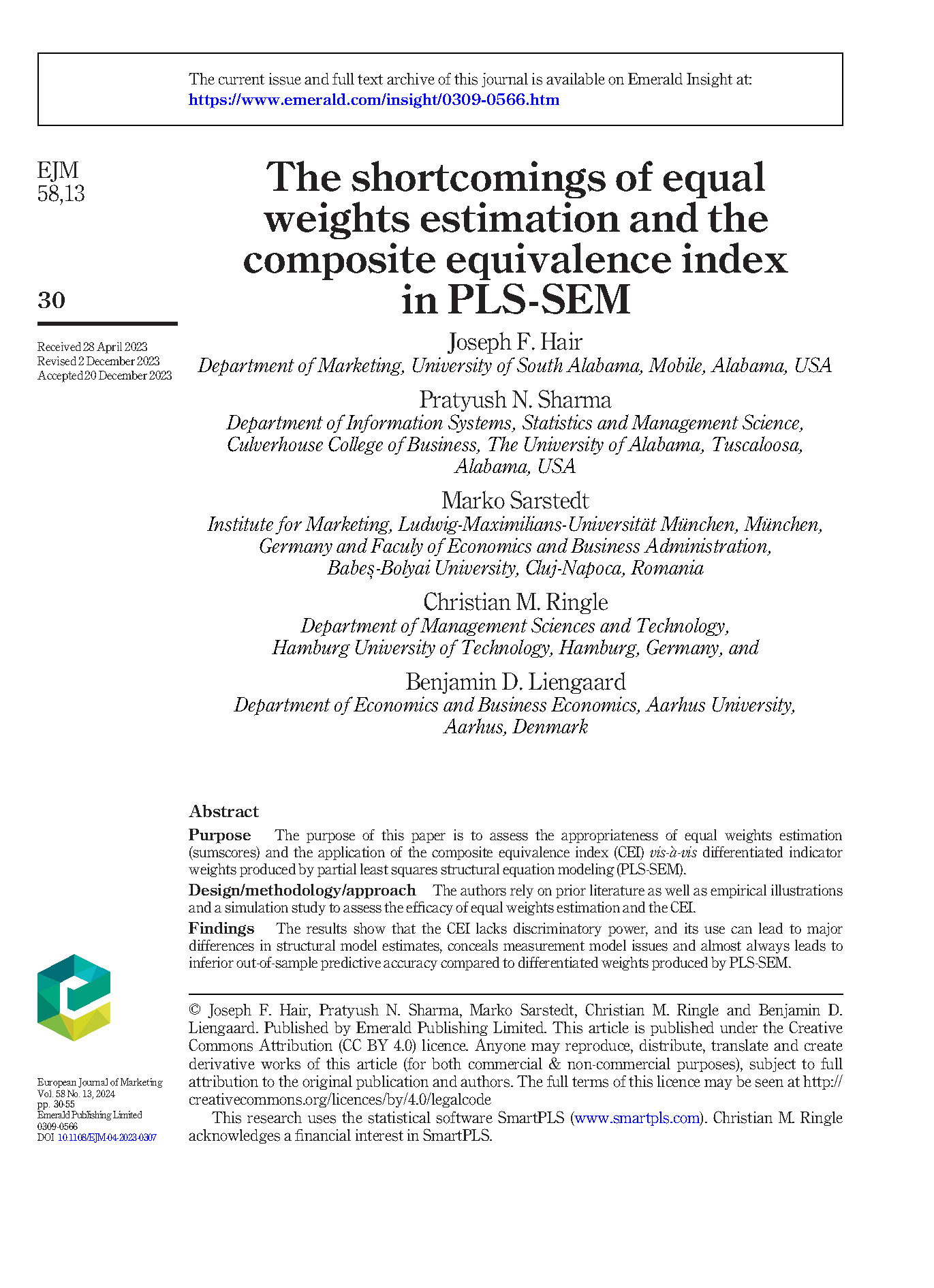|
|
|
Hair, J.F., Sharma, P.N., Sarstedt, M., Ringle, C.M. & Liengaard, B.D. (2024) European Journal of Marketing [Core Economics, Q2]
Autor:
Cristina Alexandrina Stefanescu
Publicat:
12 Febuarie 2024
Hair, J.F., Sharma, P.N., Sarstedt, M., Ringle, C.M. & Liengaard, B.D. (2024) The shortcomings of equal weights estimation and the composite equivalence index in PLS-SEM. European Journal of Marketing, 58(13), 30-55.
DOI: https://doi.org/10.1108/EJM-04-2023-0307
✓ Publisher: Emerald
✓ Categories: Business
✓ Article Influence Score (AIS): 1.377 (2024) / Q2
Abstract: The purpose of this paper is to assess the appropriateness of equal weights estimation (sumscores) and the application of the composite equivalence index (CEI) vis-à-vis differentiated indicator weights produced by partial least squares structural equation modeling (PLS-SEM). The authors rely on prior literature as well as empirical illustrations and a simulation study to assess the efficacy of equal weights estimation and the CEI. The results show that the CEI lacks discriminatory power, and its use can lead to major differences in structural model estimates, conceals measurement model issues and almost always leads to inferior out-of-sample predictive accuracy compared to differentiated weights produced by PLS-SEM. In light of its manifold conceptual and empirical limitations, the authors advise against the use of the CEI. Its adoption and the routine use of equal weights estimation could adversely affect the validity of measurement and structural model results and understate structural model predictive accuracy. Although this study shows that the CEI is an unsuitable metric to decide between equal weights and differentiated weights, it does not propose another means for such a comparison. The results suggest that researchers and practitioners should prefer differentiated indicator weights such as those produced by PLS-SEM over equal weights. To the best of the authors’ knowledge, this study is the first to provide a comprehensive assessment of the CEI’s usefulness. The results provide guidance for researchers considering using equal indicator weights instead of PLS-SEM-based weighted indicators.

inapoi la stiri  vezi evenimentele
vezi evenimentele  home
home 
|